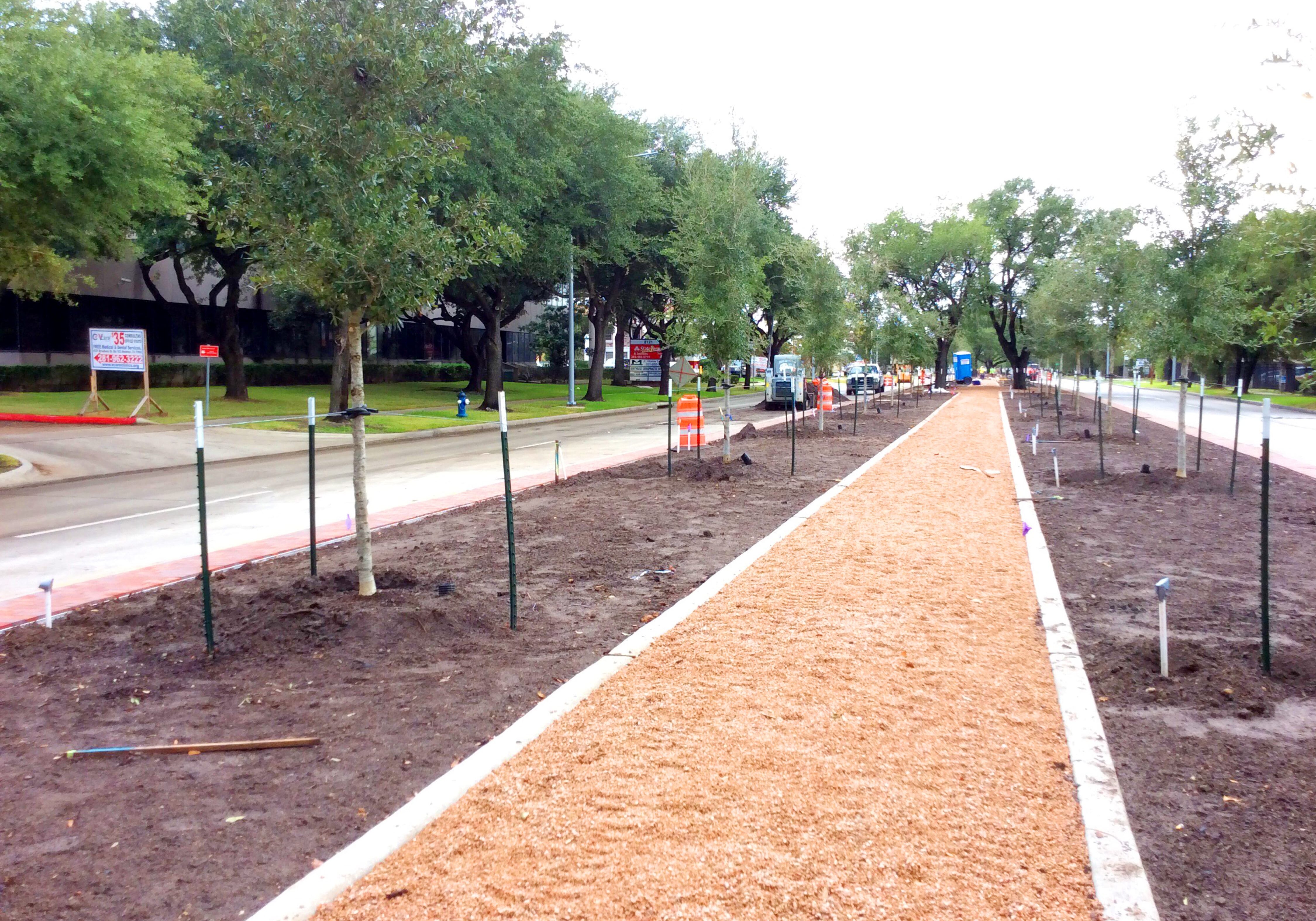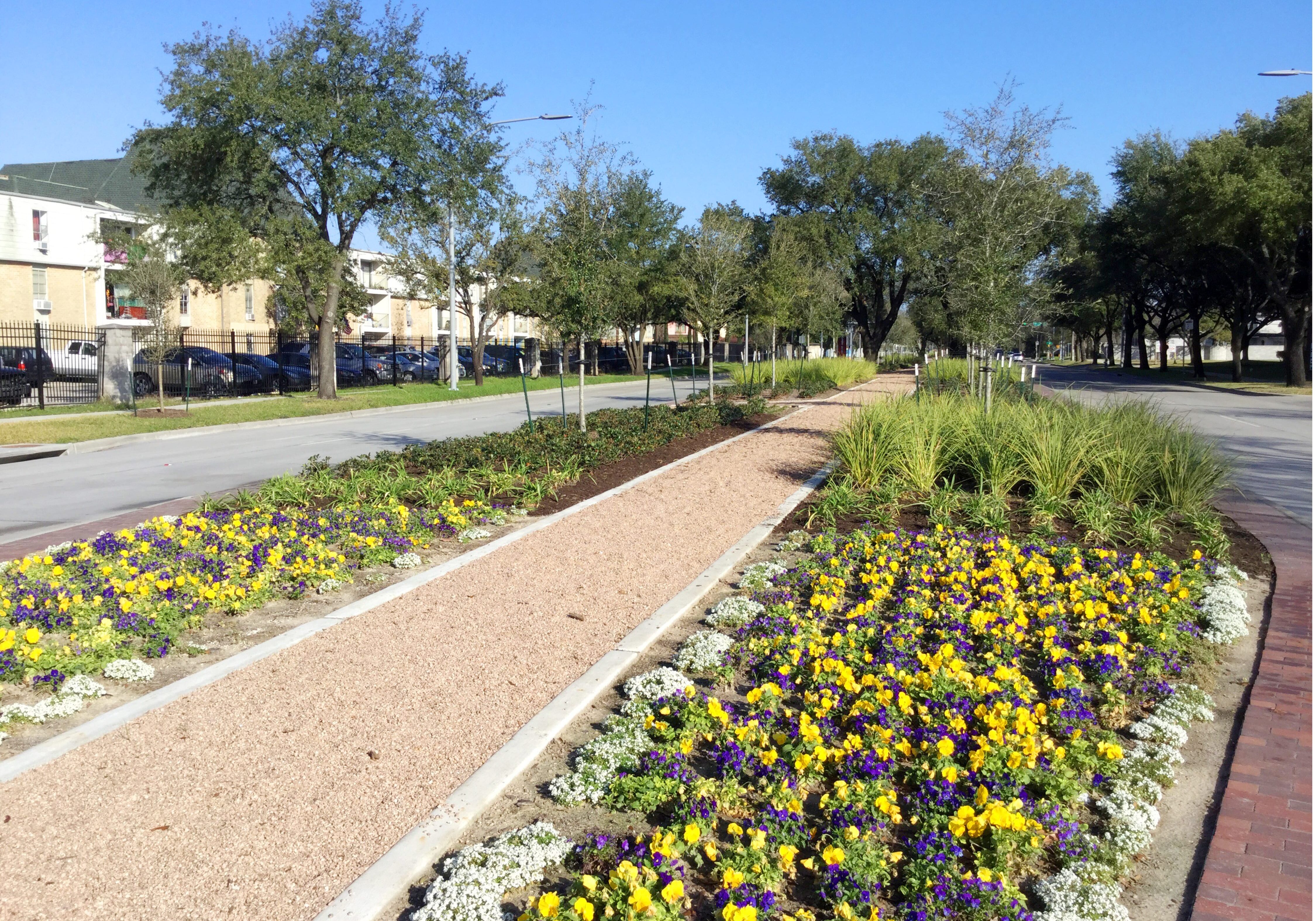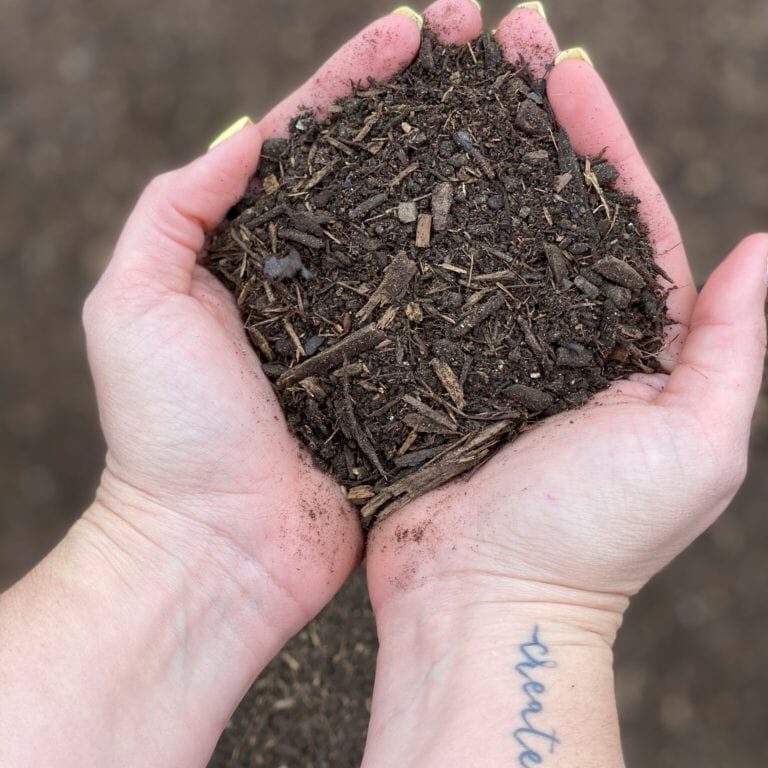BEST PRACTICES
SPECIFYING PLANTING SOILS IN URBAN CONDITIONS
Author: Mary Keilers, Principal Owner
Soil is essential to the growth and vitality of plants, as failure of plant material can often be linked to the landscape soils. Specifying the appropriate soil is critical to plant health and long-term maintenance of urban landscapes. Over time, plants have adapted to their native soils and survived for thousands of years in their natural environments. Understanding the plant origin may inform the soil selection; however, consider that most plants brought to the site are nursery grown in specialized soil mixes. Plants thrive in nursery conditions where growers closely monitor nutrients, water, and drainage.
Ornamental planting beds, much like nursery conditions, are artificial environments. The harsh urban environment may have constricted growing zones, reflected heat, unnatural drainage, and negative impacts from city water supply irrigation. Mimicking natural conditions and soils is generally insufficient in the urban context; planting soil design must compensate for the harsh urban conditions. Whether amending existing soils or importing soil blends, determining the correct soil mix begins with understanding the existing conditions and how those conditions will be impacted both by the construction process and the project's final design. We will discuss what that process looks like in this article.
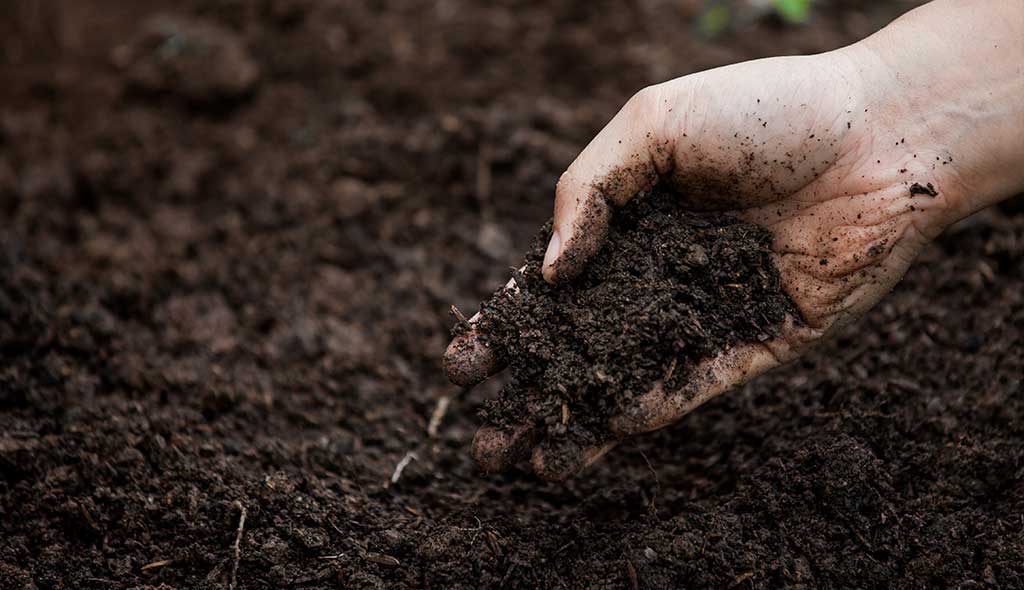
Impacts of Construction Activity on Soils
The first step to healthy soils is protection during construction operations and determining any remediation required after construction. During pre-design, the site must be well researched and investigated to understand the existing soil conditions and drainage patterns that will define the planned approach to soil management. This may involve soil testing and identification of critical zones requiring protection during construction.
Construction activity has a tremendous impact on the existing soils. The heavy equipment, material storage, and traffic of construction compacts soils, sometimes several feet deep, destroying soil structure. Limiting the extent of construction laydown areas and defining construction access points will minimize damage to existing soils and help determine soil remediation requirements.
In addition to the construction activity, the placement of structural soils and compacted fill beneath foundations results in compaction well beyond the immediate building pad, which may impact planned planting areas. This soil is often devoid of organic matter and soil microbes sufficient for the proper growth of plant material. Planting beds in the immediate vicinity of building pads, walks, and roads should account for the disturbance of the existing soils. Remediation or removal of the disturbed soils may be required.

Considerations for Specifying Soil Mixes
Soil design begins once construction impacts are defined, and the planting design is complete. Depending on site conditions and proposed design, a project may require multiple soil mix designs. Soil blends utilized in roof gardens will be significantly different than blends specified for street-level ornamental planting beds. Soil compositions should account for the plant material selected and plant layout. As varied as the ecosystems in which ornamental landscape plants originate, so is their native soil. Planting soil design must provide the appropriate nutrient level, promote soil microbiology, correlate with rainfall patterns, and account for natural processes.
Plants are a living, breathing part of the landscape. Like us, plants need specific nutrients to thrive. Soil microbiology supports plant growth by aiding in the uptake of nutrients and minerals and protecting the plant from pathogens. Microbial inoculants and organic matter may be required to improve soil structure. Whether blending amendments into the existing soil or importing a planting soil mix, providing the appropriate organic content will ensure the microbial population has adequate food for survival. Microbes cannot convert nutrients into a form for plant uptake if they do not already exist in the soil. Obtaining soil test data from soil vendors will identify the available nutrients like nitrogen, phosphorus, and potassium in soils, as well as the organic content and micronutrients. In addition, requesting soil tests evaluating the microbial biomass will establish the baseline for soil life. In the natural environment, native plant communities range from grasslands to forests, and in each of these natural environments, the microbial composition varies. Depending on where plants fall in ecological succession, microbial content will also vary from bacterial-dominated conditions to fungal-dominated conditions. Compost specifications can be tailored to contain the appropriate ratio of bacteria to fungi relative to the plant species. Analyzing and providing the proper organic, microbial, and soil composition will contribute to the plant's overall success.
Understanding native plant habitats will inform the soil moisture conditions required for optimum growth. Porosity or retention of soil blends can vary greatly depending on the soil composition, impacting the landscape soil drainage. Imported soils are typically a blend of components like sand, compost, sandy loam soil, topsoil, expanded shale, gravels, decomposed granite, and mulch. Specifying the appropriate soil blend depends on the use, site conditions, and landscape design. For example, roof garden mixes contain higher concentrations of expanded shale to decrease the soil's weight and promote porosity versus streetscape planting beds that have higher levels of topsoil to encourage moisture retention.
Taking into consideration natural processes should also influence the soil blend. Soil blends containing high ratios of mulch or compost can result in the settlement of planting beds due to decomposition. This settlement may negatively impact the landscape by causing exposure of planter or walk edges over time. Typically, utilizing the appropriate ratio of a well-composted organic material, topsoil, and supplementing the mix with expanded shale or gravel will provide the necessary nutrients and structure, resulting in less settlement.
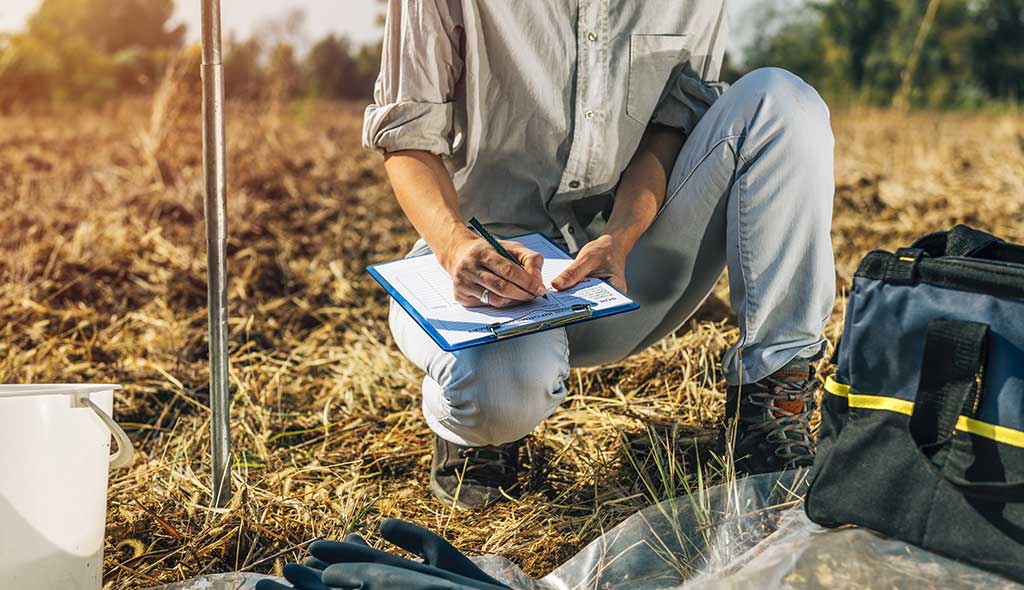

Importance of Providing Drainage in Urban Conditions
Drainage in planting beds is paramount in a successful landscape. Inadequate drainage in soil beds can create anaerobic conditions, increasing the likelihood of harmful bacteria in soil, leading to plants' decline. An easy way to tell if your site has anaerobic conditions is to dig into the soil and to see if it emits a putrid smell. Between the wet Houston climate and the impervious nature of the urban condition, planting beds often require subsurface drainage to remove excess water from the soil to maintain healthy, aerobic soils.
Incorporating amendments or importing planting soil to the site provides a better growing media to compensate for the urban site conditions; however, the excavation of existing compacted soils to allow for the installation of the specified soil can create a bathtub effect. Structures like roads, walls, and walks stop natural lateral drainage flows, forcing water to percolate down through the soil. Imported soil blends are typically more porous than existing clay soils, causing water to sit when it reaches the existing soil layer. Mitigating this effect requires subsurface drainage systems to provide an outlet for water trapped on top of the clay soils. Much like sloping walks and roads towards inlets, the bottom of the planting beds must slope towards the subsurface drainage system. Additionally, tilling the bottom of planting beds and integrating the imported soil blends into the existing subsoils eliminates the hard clay pan and encourages root growth beyond the imported soil layer. It ultimately increases the depth at which water will percolate through the soil.
Maintenance of the Soils in Urban Conditions
Simply adhering to these considerations and selecting the correct soil is not enough for a long-term healthy landscape, the proper maintenance must also be provided. Treated potable city water often has high concentrations of salt, which accumulate in the soil over time. As part of the maintenance program, regular application of soil amendments can flush the excess salts from the soil. Also, providing a mulch layer helps maintain soil moisture levels and replenish organic material in landscape beds. Each year, incorporating the decomposed mulch into the top layer of soil before re-mulching loosens soils, promotes porosity, and provides a food source for the soil microbiology. Investing in the right planting soil will reduce long-term maintenance costs by decreasing the need for supplemental fertilizers and amendments required to maintain plant health.
There are many factors to consider in creating a beautiful landscape, from plant selection and placement to proper installation and maintenance; however, sustaining a successful landscape requires a well-designed and properly installed landscape soil. As plants move from the nursery's controlled environment to the urban landscape, healthy soils help minimize transplant shock and encourage new growth. Creating a site-specific landscape soil approach is crucial to the long-term maintenance, health, and vitality of the landscape design. Knowledge and understanding of the site conditions, plant nutrients, drainage, and soil structure when determining the soil specification will yield a more successful project. Much as a building rests upon a well-designed foundation, the proper soil selections support a beautiful landscape. Careful and thoughtful consideration should be given to this selection, as it will have a lasting impact on the site.
